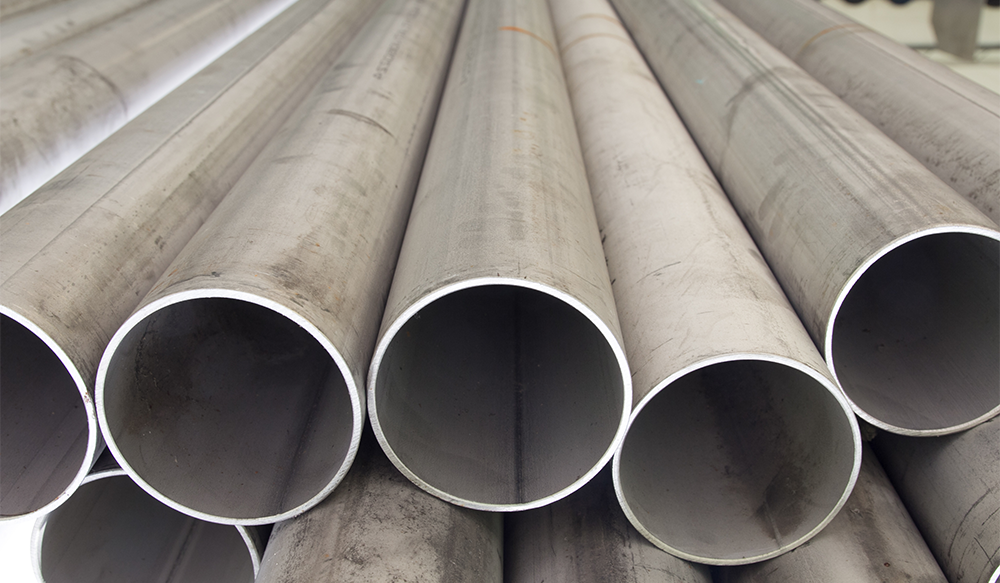
Your pipes are in an ongoing fight against corrosion. And once corrosion starts, it can spread quickly and weaken your whole piping system.
That’s where galvanizing metal comes in. By galvanizing basic metals, such as carbon steel, you can protect metal from corrosion and increase your piping system’s longevity.
Wondering how to galvanize metal to protect pipes? Read on for an in-depth look at galvanizing and five ways to galvanize metal.
What Does It Mean to Galvanize Metal?
Simply put, galvanizing is the process of adding zinc to metal in order to protect it. By adding a layer of zinc, you can turn naturally corrosive metals into corrosion-resistant parts.
Why Do Piping Pros Galvanize Metal?
Metal is constantly up against the threat of corrosion. When corrosive materials, such as salt, grime, moisture, or chemicals, combine with the iron in metal, it can cause oxidation. The result is iron-oxide, or rust. Rust breaks down metal and puts pipes in danger of collapsing or bursting.
During the galvanizing process, you protect metal by adding a layer of zinc. This zinc reinforcement protects metals in two ways:
- It provides a layer between vulnerable iron and corrosive elements.
- It protects against galvanic corrosion. Zinc has relatively anodic properties compared to most metals. As an anode, it is quick to give up electrons when it comes in contact with a more noble metal. This sacrifice is handy when that noble metal would otherwise be stealing electrons from carbon steel or another basic metal.
The Benefits of Galvanizing
So how does galvanizing improve your piping system? Here are some benefits of galvanizing pipe supports.
It is cost-effective.
You may be wondering, “If galvanizing adds anti-corrosive properties, why not just use stainless products?” The answer is: cost. Stainless steel does include built-in corrosion resistance, but it tends to be more expensive than carbon steel. Thus, galvanizing provides a relatively cost-effective way to add a layer of protection to otherwise sturdy materials.
It is more effective than simpler alternatives.
Alternatives, such as paint or other basic coatings, may seem like a simple solution. But they come with some setbacks. First, they often chip or scratch, exposing underlying metal to corrosion. Second, because they wear easily, they require constant re-application. Finally, they tend to flake or peel when they’re exposed to temperature changes or outdoor erosion.
It is less labor-intensive.
Galvanized metal goes through an intense process during manufacturing, but once it is applied to metal, the product is ready to go. That means your team doesn't have to worry about the labor-intensive processes of adding paints or other coatings. You also don’t need to waste time preparing surfaces, inspecting supports for scratches, or repainting.
Common Galvanizing Methods
Wondering what galvanizing methods are out there? Here’s a quick overview of how to galvanize metal to protect pipes.
1. Hot-Dip Galvanizing
Hot-dip galvanizing is one of the most reliable galvanizing options available. In fact, according to the American Galvanizers Association, hot-dip galvanizing structural steel can add more than 70 years to its longevity.
During this galvanizing process, you dip your metal in liquid zinc. Because you can submerge the whole object at once, it is a great option for pipe supports of all shapes.
| All of APP’s standard products are hot-dipped galvanized to mitigate the challenges of corrosion, including u-bolts, pipe shoes, hold-down clamps/straps, hangers, and fabricated supports. |
2. Pre-Galvanizing
Pre-galvanizing is common with products that are consistently shaped, such as metal sheets or plates. To pre-galvanize metal, you run it through a zinc wash. However, as the name suggests, pre-galvanizing is usually done prior to fabrication. That means those spots that are cut during manufacturing will be exposed to corrosion.
3. Electrogalvanizing
Instead of dipping the base metal in a zinc bath, electrogalvanizing, or electroplating, uses electrical current to transfer zinc into metal. When your base metal is combined with an electrolyte and zinc solution, an electric current is sent through the elements. Zinc ions naturally move into the base metal, adding a layer of protection.
Electroplating makes it easier to add an even coating to supports, but the coating tends to be thinner than hot-dipped layers.
4. Metalizing
With metalizing or thermal sprays, you spray zinc onto a base metal’s surface. This is a solid way to layer precise zinc protection, but it tends to take a good amount of surface preparation and specialized labor. That means it is often more expensive than other galvanizing methods.
5. Sherardizing
During the sherardizing process, you add heated metal to a rotating container, along with zinc particles. The rolling concoction is heated up to high temperatures, the zinc eventually evaporates, and the zinc bonds with the base metal. This process is popular with detailed products, such as supports that feature fine threads.
Protect Your Piping System
Looking for high-quality galvanized products. Download The Expert's Guide to Hot-Dip Galvanization to learn more.
Have a question about your next project? We’re here to help. Talk to one of our piping experts today, and we’ll help you elevate the performance of your piping system.






